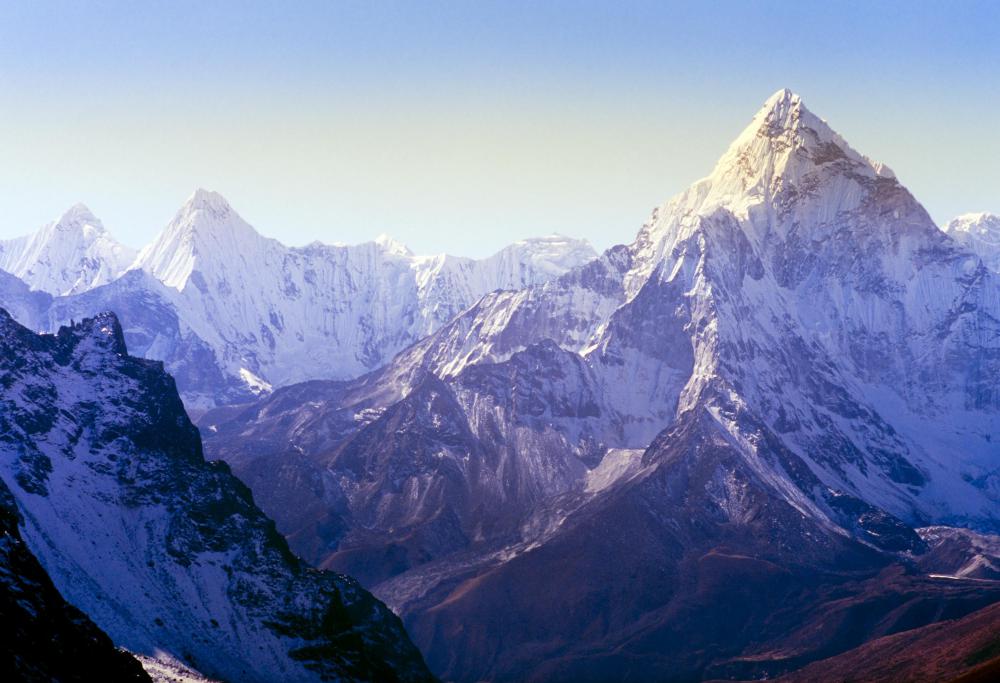At AllThingsNature, we're committed to delivering accurate, trustworthy information. Our expert-authored content is rigorously fact-checked and sourced from credible authorities. Discover how we uphold the highest standards in providing you with reliable knowledge.
What Is a Dzo?
Dzo is the Tibetan word for the male offspring of a cross between domestic cattle and yak. The dzo is a common livestock animal in Tibet, with large herds of yak and mixed hybrids sprinkled throughout the Tibetan mountain regions. Physically, dzo and their female counterparts, known as dzomo, are smaller than yaks, but larger than domestic cattle. Although not an absolute, a dzo will typically present with facial features resembling a cow, but with the shaggy coat and horns characteristic of a yak. Similar bovid hybrids are also common to Mongolia and areas surrounding the Himalayas, known there as khainag, zho, or zo.
Tibetans, Mongolians, and other cultures use dzo and dzomos as pack animals in high mountain regions, much the same as purebred yaks. Cultures living in high elevations, such as the Himalayas, rely on animals with the strength and physiological characteristics required to carry heavy loads for long, arduous journeys through rugged mountain conditions. Animals, therefore, must have the ability to breath the rarefied air of high elevations, as well as the dexterity to navigate difficult mountain terrain. Compared to purebred yak, dzo are more agile, owing to their cow ancestry, but without the pulmonary challenges cattle suffer at high elevations.

In addition to being pack animals, herders also use dzo and dzomos for more traditional livestock purposes. Since dietary requirements of yaks, cattle, and hybrids are the same, upkeep for large herds is relatively simple and allows herders to maximize the usefulness of each animal. Milk and meat production from bovid hybrids is reportedly higher than purebred yaks. Meat, milk, and hides not only provide sustenance for herders and their families, but commodities for resale to others.

For breeding purposes, dzo have little to no value to herders or professional breeders. Male offspring are sterile, much like mules. On the other hand, unlike mules and dzo, dzomos are able to bear young and can be bred back to purebred yak or cattle. Serious breeders and herders will cross a dzomo back to a purebred in an effort to secure only the best yak and cattle traits in future offspring.
Researchers have studied yak and domestic cattle in the Himalayan region in an effort to determine how and why yak have adapted so well to altitudes above 10,000 feet (3,048 meters). Studies show that yak have low pulmonary artery pressure, a genetic adaptation passed on to hybrid offspring. Such results highlight a possible reason why yak, dzo, and dzomo do not suffer the same pulmonary hypertension as cattle when exposed to the rarefied air of high elevations. Hope for answers to human pulmonary function and adaptation lies in understanding how bovine, camelid, and similar species adapt on a genetic level to such conditions.
Frequently Asked Questions
What exactly is a dzo?
A dzo is a hybrid animal, specifically the offspring of a domestic cow and a yak. This crossbreeding typically involves a male yak and a female cow, resulting in an animal that is larger and stronger than both of its parents. Dzos are highly valued in regions like Tibet and Mongolia for their ability to carry heavy loads and produce more milk and meat than yaks.
Can dzos reproduce?
Dzos are generally sterile, meaning they cannot reproduce. This is a common trait among hybrid animals, as the genetic differences between the two species—cows and yaks—usually lead to offspring that do not have the ability to produce their own young. However, there are rare cases where female dzos, known as dzomos, may be fertile and capable of breeding.
What are the benefits of breeding dzos?
Breeding dzos offers several advantages, particularly in high-altitude farming communities. These hybrids inherit the yak's ability to thrive in harsh, mountainous environments while also gaining the cow's more docile nature and higher productivity. Dzos can produce more milk and have a greater muscle mass, making them valuable for both dairy and agricultural work, according to agricultural studies in Himalayan regions.
Where are dzos commonly found?
Dzos are commonly found in the mountainous regions of Central Asia, especially in countries like Tibet, Nepal, Bhutan, and Mongolia. They are well-suited to the high altitudes and rugged terrain of the Himalayas and other mountain ranges in the area, where they are an integral part of local agriculture and transport.
How are dzos used by local communities?
Local communities in high-altitude regions rely on dzos for a variety of purposes. They are used as pack animals due to their strength and endurance, capable of carrying heavy loads over difficult terrain. Additionally, dzos provide a source of high-quality milk and meat, which is particularly important in areas where other livestock may not thrive as well.
Are dzos considered an environmentally sustainable option for farmers?
Dzos are often considered an environmentally sustainable option for farmers in their native regions. They are well-adapted to the local ecosystem, requiring less feed than other livestock and making efficient use of the sparse vegetation found at high altitudes. Their ability to produce more milk and meat on less input also contributes to their sustainability, making them a valuable asset for subsistence farmers in challenging environments.
AS FEATURED ON:
AS FEATURED ON:












Discuss this Article
Post your comments